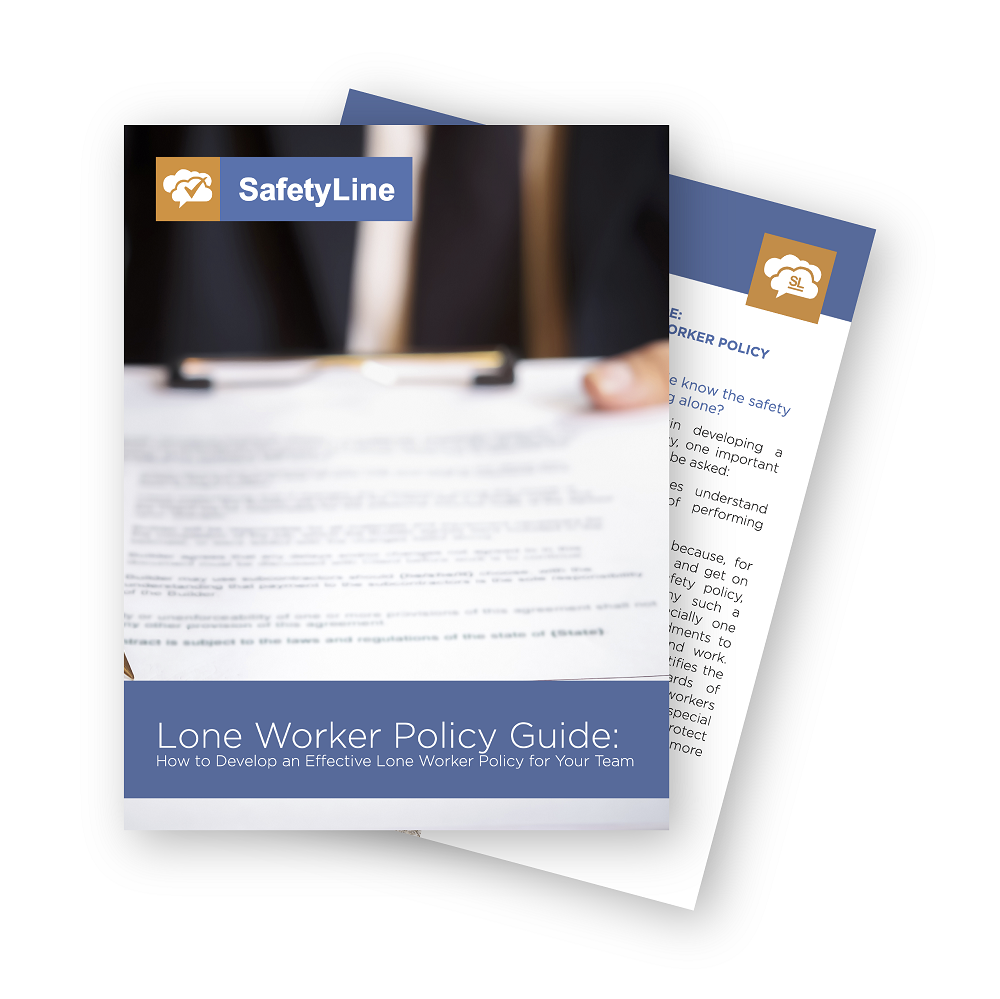Featured Resources
Lone Worker Policy Guide and Template
A lone worker policy is an effective way to ensure that your lone workers are well-educated on your company’s work-alone rules and have extensive knowledge of all workplace hazards that could be encountered on the job.
Hazard Assessment Guide
In the process of doing a hazard assessment for your workplace, it is almost a certainty you’ll learn information about the operational aspects of your organization you were unaware of before the assessment.
View eBook
Develop a Free Lone Worker Program for Small Teams
Developing a free lone worker check-in system is a simple process for small teams that any organization can implement.
View eBook
SafetyLine Blog Categories
General Safety | Lone Worker Safety | SafetyLine News and Updates | SafetyLine Product Updates | Compliance, Policy, and Regulations | Downloadable Resources |
Why Worker Safety Check-ins are Essential
Safety check-ins are integral to an effective occupational health and safety (OHS) program, helping improve the overall well-being of your employees, especially lone workers who perform their jobs in isolation and by themselves.
Want to improve worker safety and productivity?
Pay more attention to communication
When you think of worker safety, what’s the first thing that comes to mind? Is it personal protective equipment like face shields or electrical gloves? Or is it an emergency notification device like a panic button? And while these are all important elements of a strong worker safety program, an area often missed is internal communication amongst the team and organization.
Occupational Health and Safety (OHS) Policy Statement - Free Template
A well-planned and researched OHS policy statement is one of the first steps in elevating the safety of staff members, clearly outlining everything your organization wants to achieve in OHS including goals and objectives, as well as strategies and tactics that will involve the team.
Slips and Falls, Deadly Temperatures, Winter Driving – Address These Safety Hazards Now
As the temperatures plummet and the snow, ice and rain increase, slip and fall injuries see a spike, particularly for those working in these conditions. According to the US Bureau of Labor Statistics, in 2017, there were more than 20,000 work injuries related to ice, sleet and snow. The workers most at risk are obviously those working outside, facing the elements including farmers, fishermen, snow cleanup staff, first responders like paramedics, construction workers, security personnel, and community healthcare workers.
Setting Goals for 2021: Safety is the Best Investment You Can Make
Investing in safety isn’t just buying reflective jackets, at least on its own. It’s something that is ongoing and involves a lot of reflecting on how your organization manages risk, protects employees, and actively works towards introducing incremental changes that can add up over time.
Slips, Trips, and Falls: The Number One Safety Hazard During Fall and Winter
As we approach the final month of a surreal year, the temperatures continue to plummet and depending on where you live, snow, sleet and rain will fall even harder. Here in rainy Pacific Northwest where SafetyLine’s headquarter is located, winter brings us increasingly wet streets, walkways, and surfaces, resulting in more injuries (some very serious) from slips, trips and falls at work, at home, and in public.
Safety and Key Elements to Successful Working Relationships with Remote Teams
Managing an entirely remote workforce is a phenomenon that many Canadian businesses would have never imagined being tasked with. However, the past few months have forced companies across Canada to adjust to new work-from-home environments. One of the most important drivers of workplace productivity is the network of working relationships within an organization. This article will breakdown the key components of fostering successful relationships with remote working teams.
Reducing Risks For Retail Lone Workers at Night
If your retail staff is working alone at night, these tips will mitigate their risk and could save their lives.
Essential Safety Tips for Working at Heights
The prospect of working at heights covers many different industries. Whilst some professions have bigger risk than others, it’s important to be safe no matter what kind of height you might be facing. Taking precautions before working at height can save lives and prevent serious and life-threatening injuries, so being prepared in your line of work is incredibly important.
A Brief History of Labour Day and Safety & Workers Rights in Canada and the USA
Labour Day in Canada is recognized every first Monday of September since the 1880s. In the second half of the 19 century, Canada was changing rapidly with the increase of immigration, cities growing in numbers, and the industrial revolution drastically altering Canada’s economy and workforce.
Health and Safety Twitter Feeds to Follow for Canadians
We created is a list (in no particular order) of some of the most influential Canadian health and safety twitter feeds to follow in 2019.
What Can You Do With a SafetyLine License?
SafetyLine is designed to support flexible workforces, from as few as a handful to hundreds or even thousands of users. For any organization using SafetyLine, they purchase a number of licenses. Typically, one per Lone Worker, but some prefer to buy extra, planning for expansion or for unexpected contingencies.
Due Diligence and Keeping Lone Workers Safe
Due diligence is the level of judgement, care, prudence, determination, and activity that a person would reasonably be expected to do under particular circumstances. Applied to occupational health and safety, due diligence means that employers must take all reasonable precautions, under the particular circumstances of every aspect of their business, to prevent injuries or accidents in the workplace.
















